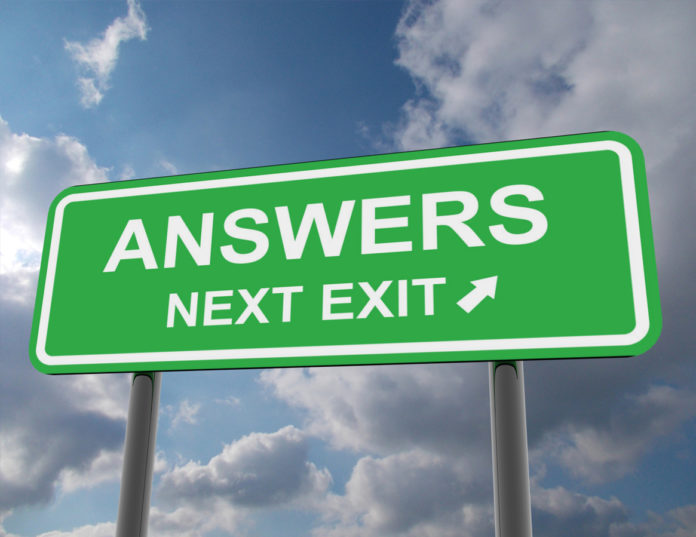There are some specific reasons for some highway signs being colored green, as opposed to any other color. It has nothing to do with the green of nature or for any other object typically colored green, but instead has much more to do with a driver’s mood and state of alertness. Green signs are purposely colored with a cooler hue, so as not to alert the driver or disturb their focus on operating the vehicle. Read on to find out the true intentions of making some road signs green, as opposed to using other color schemes.
How Did the County Select Green?
You might not think there was any strategy behind making some traffic signs green or blue while making others red, black, or white. The truth is, a great deal of thought has gone into the process of matching colors to the information contained on specific road signs, so as to be of maximum value to drivers, and to coincide with the importance of the information contained.
For instance, a red stop sign is colored red because it is intended to quickly get the driver’s attention, and because an intersection is just up ahead so it will be necessary to come to a complete halt. The cooler colors, which are considered to be green, blue, and brown, do not contain information considered to have the same urgency as a stop sign, and are more informative in nature. Rather than grabbing the driver’s attention quickly, the coloring of these signs is meant to simply inform the driver of some traffic situation of interest.
The green coloring on highway exit signs and directional signs will always be used when it’s simply necessary to inform the driver about an upcoming convenience. Like all the other cooler sign colors, green signs are meant to not be distracting, and to inform the driver rather than disturb or alert the person. Another popular usage of green signs are the State Shields which designate business loops or business areas, and are associated with the State Highway having the same number.
For instance, a green and white business loop sign showing the number 75 on it, would be associated with State Highway 75, but would direct the driver toward the business section of an area. This will provide access to area businesses along that same route, so that the businesses themselves would not be bypassed by the State Highway, and lose money from all the motorists who simply bypass the entire area on the highway.
When Did This Become a Standard Practice?
The specific usage for green traffic control signs, and in fact for all colorations of traffic control signs on today’s roadways, has been in place since the adoption of the Manual of Uniform Traffic Control Devices in 1971. Several versions of the same manual were introduced as far back as 1935, with greater standardization and more improvements coming with each version.
For the most part, changes to the manual have been brought about as a result of improving technology, and a desire to convey more useful information to vehicle operators. This in turn, has helped to make motorists safer on the nation’s roadways, and to cause fewer car accidents because the flow of vehicles is better managed.
It was recognized early in the 20th century that some sort of standardization like this would be necessary, because roadway signage up to that point was fairly chaotic. Prior to the adoption of a national standard, various private road clubs would implement their own road signs, but it was more for the benefit of promoting the highway itself than to make it safer for motorists. Nowadays, standardization has helped keep the meaning and the appearance of traffic control devices uniform throughout all states of this country.
What Was it Like Before?
In the early days of driving, there were obviously no standards at all for road signs, and travelers would frequently lose their way, simply because signs were missing, knocked down, or unreadable for some reason. In 1899, a group of forward-thinking individuals met in New York City to form the predecessor of the American Automobile Association. One of the reasons they met was to discuss strategies for implementing and maintaining signs on local highways, so that drivers could be directed to specific locations in the area.
A number of other automobile clubs sprang up in the country in the early years of the 20th century, and in some cases these automobile clubs competed with each other for the privilege of posting signs along a given route. The first real movement toward standardization of national road signs came in the early 1920s, when representatives from Indiana, Minnesota, and Wisconsin toured a number of different states, with the intention of developing some system for uniform road signs.
When their findings were reviewed in 1932, standards were developed for sign shapes and colors, with many of these still being used today. For instance, this group determined that round signs should be used for railway crossings, because they provided a high level of danger to motorists, octagonal signs should be used for stop signs, diamond signs should be used to convey caution to drivers, and rectangular signs should provide regulatory information. Once this effort had established preliminary standards, everything that followed either improved upon or expanded the standards associated with traffic safety and traffic control.
Professional Signs for Every Situation
All the cool-colored signs such as green, blue, or brown, are designed to not be distracting, and simply provide information which might be useful to a vehicle operator. Whether you need green signs, if you’re looking to buy traffic safety supplies and accessories, the best place to obtain high-quality versions of these products is at Worksafe Traffic Control Industries. Contact us today for a quote on any products you need, or to obtain more information about our wide range of traffic control products.










